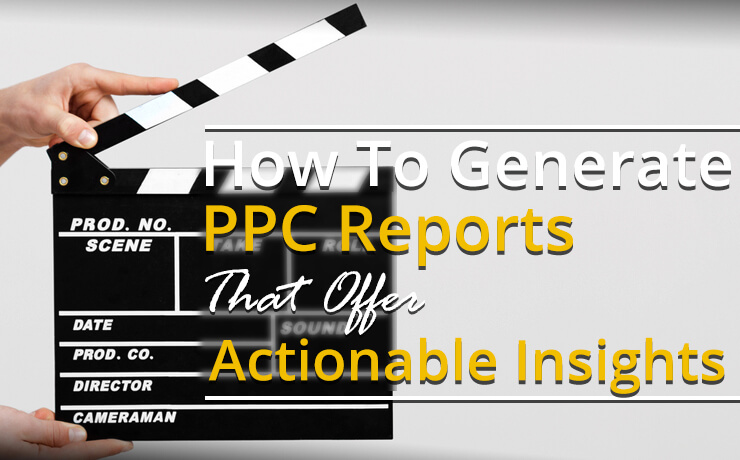How To Generate PPC Reports That Offer Actionable Insights

Chad Faith
Director of Content

When it comes to creating PPC reports, some people tend to go overboard by throwing every number, dimension, and metric they can think of into their reports. However, this practice only works for those who want to get a macro view. For others, not so much. If you wish to cut through the clutter and get to the relevant insights that actually can drive your action items, here’s what you should know:
Establish Automation in Your Reports
If you want to look at reports that tell you explicitly what you should do, you should consider building in some automation in the correct areas. You can achieve this task by using reliable report automation tools. Let’s say that you were pulling in quality score factors from AdWords. A report automation tool can auto-populate using query functions. The next step to making this data actionable is to estimate potential quality score gains. You may need to improve landing page relevance, ad copy, and CTR.
A useful method is to estimate potential gains by ad group, and assigning a multiplier for both ‘below average’ and ‘average’ ratings. You will also need to include a simple IF statement to pick items that have the largest impact on the ad group. The end result is an easy-to-understand table featuring recommended actions to take to increase QS.
Work in Reverse Order
In the world of PPC marketing, you may find it useful to work backwards when you want your reports to give you actionable takeaways. It is pertinent that you think about what changes you will need to make in your account regularly before looking for the data you need to make those decisions. Other important questions to ask yourself include:
- How can I display the information I have compiled in an easy-to-digest format?
- What problems am I solving and answering?
- What are my decision criteria?
From there you will have a clearer picture of what you need to include in your reports. An example of working backwards would look something like this:
- Goal: How should I expend my budget?
- Data required: CPA, impression share, and conversions
- Criteria: Increase bid and allocate more budget to low CPA locations that are converting well
- Impact: Expected additional search conversions with increased spend
Avoid Including Too Much Data In Your Reports
Have you looked at the length of your reports? Are you sure every item on them adds value of some sort? If you have reports that feature page after page of endless visuals and charts, they can really detract from the main message. When you have too much information, it gets more difficult to create actionable items. Hence, your first step is to remove all the unnecessary screenshots, graphs, charts, etc. You should only include information that helps guide your decision and is valuable to your business. It is important that your clients and stakeholders also care about the information within the reports.
 Free
Consultation
Free
Consultation Free
Google Ads Audit
Free
Google Ads Audit







